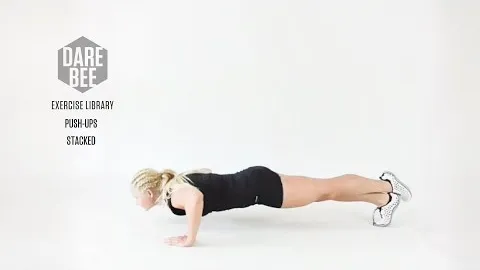
The Stacked Push-Up exercise is an excellent way to target and strengthen your upper body muscles, particularly the chest, shoulders, and triceps. This advanced variation of the traditional push-up offers a greater challenge and allows you to push your limits. In this article, we will provide you with a detailed guide on how to perform the Stacked Push-Up exercise correctly, its benefits, variations, and safety tips.
The Stacked Push-Up is a form of a push-up where you position your hands on top of each other rather than shoulder-width apart. This hand placement creates a stacked alignment, which increases the intensity and difficulty of the exercise. By modifying the hand position, you engage your muscles in a slightly different way, providing a new stimulus for growth and strength development.
Incorporating the Stacked Push-Up exercise into your regular workout routine can offer numerous benefits:
Once you have mastered the basic Stacked Push-Up, you can further customize the exercise to target specific muscle groups or intensify the challenge. Here are a few variations to consider:
While the Stacked Push-Up can be highly effective in building upper body strength, it's crucial to prioritize safety to prevent injuries. Keep the following tips in mind when performing this exercise:
Incorporating the Stacked Push-Up exercise into your fitness routine can significantly improve your upper body strength and muscle definition. By following the correct form, gradually progressing, and prioritizing safety, you can enjoy the benefits of this advanced variation. Remember to listen to your body, make modifications as needed, and seek guidance from a fitness professional if necessary. Challenge yourself, stay consistent, and watch your upper body strength soar with the Stacked Push-Up exercise!
If you're looking for a gym, fitness club or yoga studio, you've come to the right place.
You can find information about gyms in your area. Browse catalog of gyms and find gyms with classes which are you looking for.
On gym page you can find simple information like address, phone or website. You can find list of available classes. You can check availability of personal training or small group classes. On place page you can also see information about open hours.
You can find gyms near you with amenities, courts, studios and equipments.
Use our map to find gym at your city or district.
In Gym Navigator you can find list of exercises with movies for many body parts.
You can browse exercises catalog and find exercises the best of you.
You can also find exercises grouped into workout plans, which you can use to improve you body. Each routine show you exercises one by one and give you possibility to count you progress and count down rest time.